Die karstige Insel Hvar vor der Südküste Kroatiens lockt Touristen mit ausgezeichneten Weinen, blühenden Lavendelfeldern, einer langen Geschichte und einer unglaublichen vielfältigen Kultur.
Die dalmatinische Insel Hvar im Süden Kroatiens ist die meistbesuchte Insel Kroatiens. Eigentlich weiß keiner so genau warum, denn die Landschaft der benachbarten Insel Korčula ist um einiges schöner als die schroffe, karstige Bergwelt von Hvar und ihre Ortschaften um einiges lieblicher.
Hvar kann auch nicht wirklich mit attraktiven Buchten oder Stränden aufwarten und dennoch ist die Insel vor allem in den Sommermonaten die touristischste aller Adriainseln.
Inhaltsverzeichnis
BILDER: Insel Hvar
Vielleicht liegt es am besonderen Duft von Hvar, denn das auch als Gewürzinsel bekannte Eiland ist bekannt für seine Salbei-, Rosmarin- und vor allem Lavendelprodukte. Kulinarische Spezialitäten Hvars sind Lammbraten, Sardinen und Sardellen und wahrscheinlich trägt auch das mediterrane Klima mit milden Wintern und angenehmen Sommern zur Beliebtheit von Hvar bei.
Wie kommt man am besten auf die Insel Hvar?
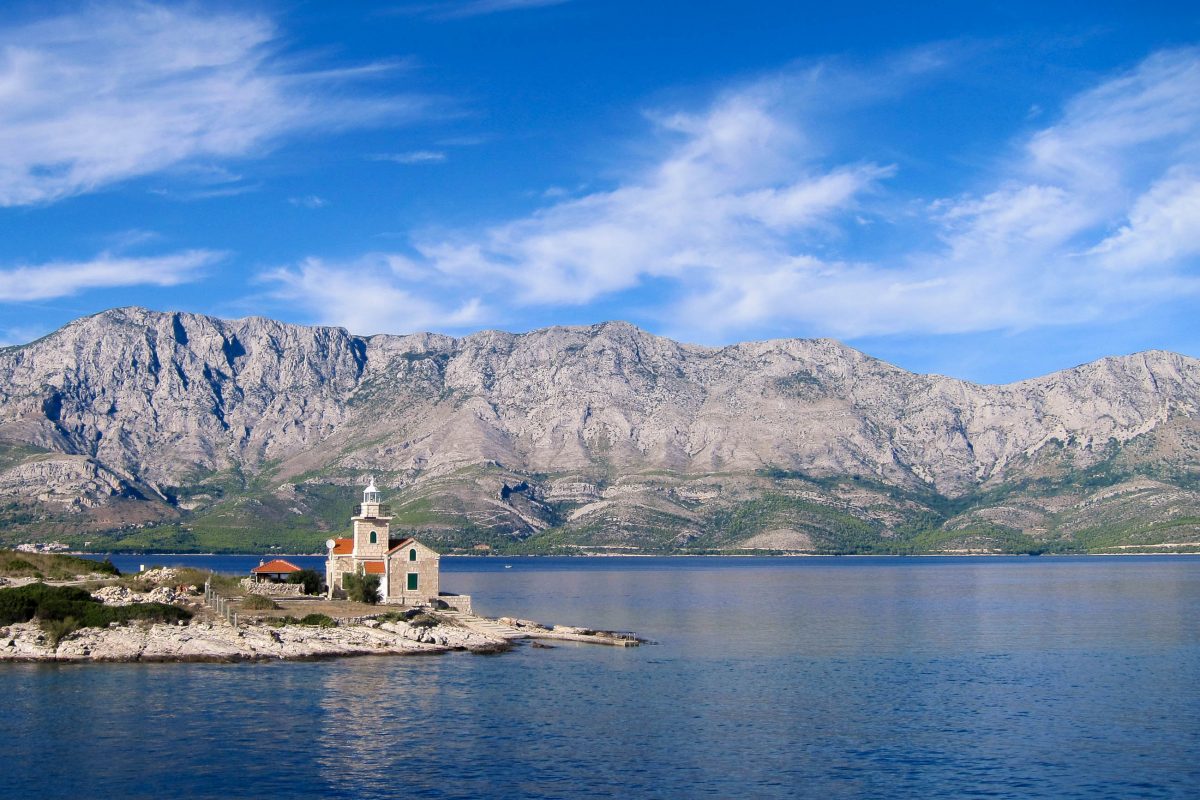
Zu erreichen ist die viertgrößte Insel Kroatiens nur mit der Fähre. Diese starten in Split und legen in Stari Grad bzw. Hvar an. Auch von Drvenik gibt es eine Fährverbindung, die an der Ostspitze in Sućuraj endet, wo man von einem malerischen Leuchtturm begrüßt wird.
Tipp: Hvar ist nicht unbedingt für große Autos gemacht! Die Insel ist äußerst gebirgig und die Bergstraßen von Ost nach West sind extrem schmal und haben oft kein Bankett. Jeder Gegenverkehr wird hier zu einer Stresssituation.
Stari Grad – Tor zu Hvar
Für Reisende, die von Split kommen, ist Stari Grad das Tor zu Hvar. Ein ca. 25minütiger Fußweg führt vom Fährhafen zwischen grünen Hängen ins Zentrum, das vom Kirchturm der Pfarrkirche Sveti Stjepana dominiert wird. In der hübschen, einst griechischen Altstadt ist vor allem die Residenz Trvdalj am mittelalterlichen Piazza Skor sehenswert.
Einst ließ sich hier der kroatische Dichter Petar Hektorović inspirieren. In seinem ehemaligen Landsitz sind heute Alltagsgegenstände des Dichters ausgestellt, der schattige, arkadenumsäumte Garten mit einem Fischteich lädt zum Verweilen ein.
Im Stadtmuseum im Palais Biankini werden Funde aus der Zeit der Griechen sowie Werke von Künstlern aus dem 20. und 21. Jahrhundert ausgestellt.
Hvar – Hauptort auf der Insel Hvar

Der Hauptort der Insel Hvar ist die gleichnamige Stadt am westlichen Ende der Insel gegenüber von Stari Grad. Als touristisches Zentrum der Insel wird Hvar auch oft als „Mini-Dubrovnik“ bezeichnet, an dem Kreuzfahrtschiffe anlegen und zu jeder Tageszeit am Hafen reges Treiben herrscht. Ein Spaziergang durch Hvars mediterrane Altstadt erinnert sehr an Venedig und ist unbedingt empfehlenswert!
BILDER: Altstadt von Hvar
Fotogalerie: Altstadt von Hvar
Aufgrund seiner für die Seefahrt bedeutenden Lage war Hvar im Lauf seiner Geschichte bereits Ziel verschiedenster Machthaber. Zur größten Blüte führten Hvar die Venezianer zwischen 1278 und 1797. Damals wurden die Verteidigungsanlagen der Stadt ausgebaut und prächtige Bauten errichtet, die in der malerischen Altstadt von Hvar heute noch zu sehen sind. Als bedeutende Hafenstadt zog Hvar eine Vielzahl an Dichter, Historiker und Theologen an, die über Hvar berichteten.
Sehenswürdigkeiten in der Altstadt von Hvar
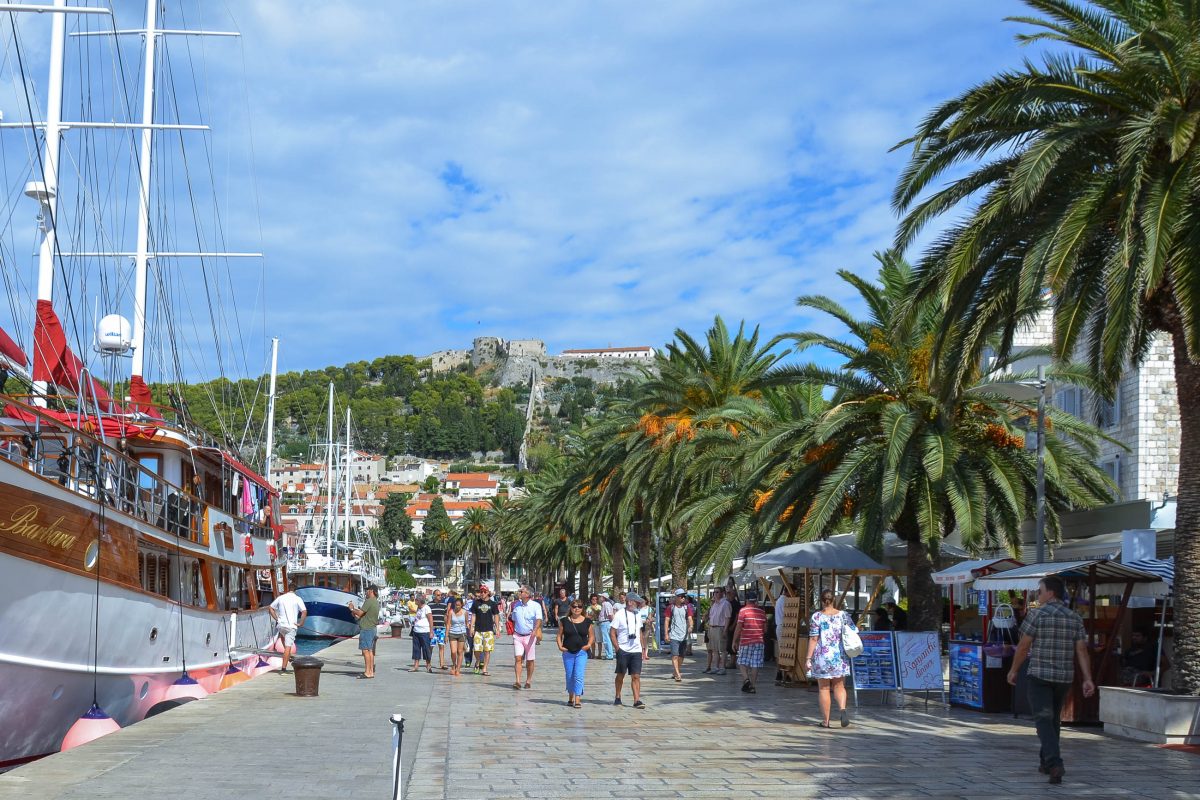
Der Tourismus in Hvar startete im Jahr 1866, nachdem der österreichische Arzt Franz Unger feststellte, dass sich das mediterrane Klima äußerst positiv auf Lungenkrankheiten auswirkte. Vom damaligen Bischof wurde alsbald die „Hygienische Gesellschaft Hvar“ gegründet und der Gesundheitstourismus war geboren.
Tipp: Parkplätze gibt es in Hvar nur außerhalb des Zentrums, die alle kostenpflichtig sind.
Arsenal
Im venezianischen Arsenal direkt am Hafen von Hvar (damals eine riesige Werfthalle) wurde im Jahr 1612 das erste Stadttheater Europas eröffnet. Dem damaligen Fürst Semitecolo gelang damals ein genialer Schachzug, um endlich Frieden zwischen dem Adel und dem gemeinen Volk zu stiften.
Damals hatte Hvar noch etwa doppelt so viele Einwohner wie heute, von denen viele zur wohlhabenden Adelsschicht zählten. Bis heute hielten die Einwohner von Hvar an ihrem Theater fest – und waren die Zeiten noch so schlecht. Das Theater kann heute auf dem Architektur-Stand des 19. Jahrhunderts besichtigt werden, der beste Anlass dazu ist natürlich eine Vorstellung einer lokalen Volksmusikgruppe.
Stadtloggia und Uhrturm

Am Hafen gleich gegenüber dem Arsenal thront heute noch der letzte Rest der einst weitläufigen Residenz des Stadtkommandanten. Die Stadtloggia wurde Anfang des 20. Jahrhunderts ins damalige Kurhotel Kaiserin Elisabeth (das heutige Hotel Palace) integriert.
Stefansplatz und Umgebung
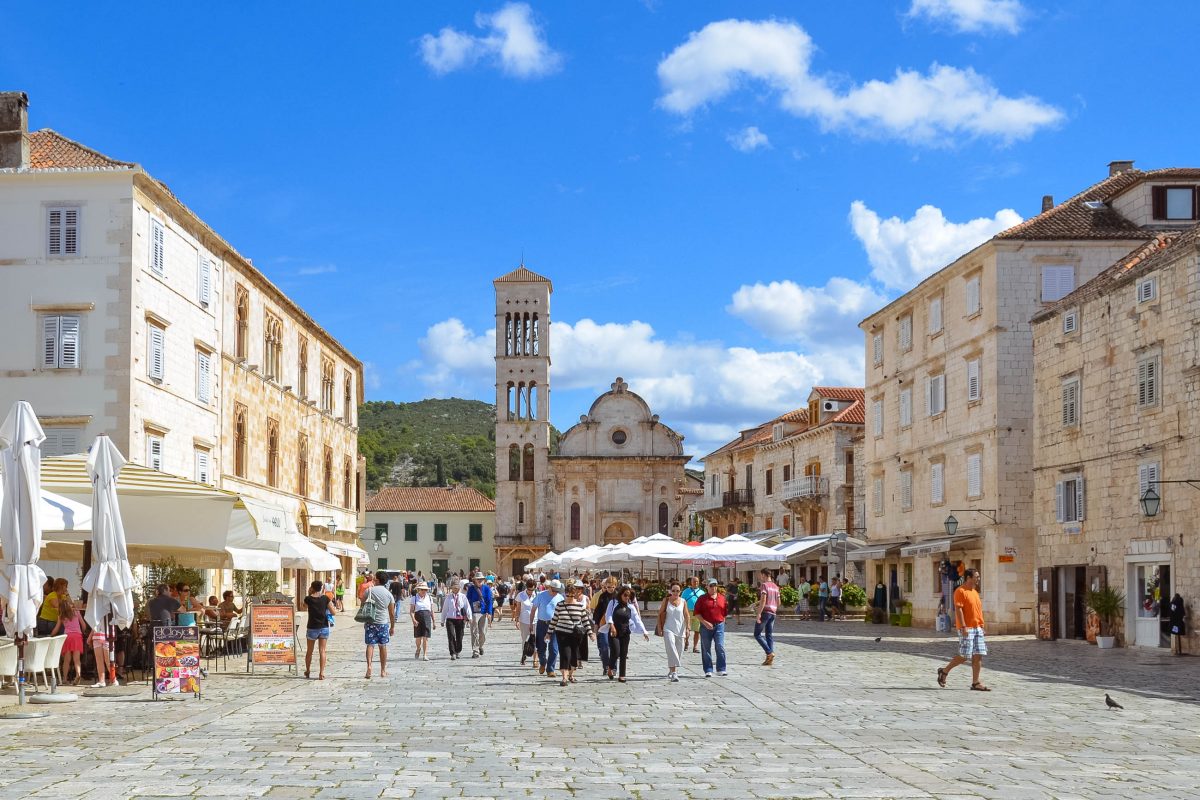
Der langgestreckte Trg Sveti Stjepana zwischen Arsenal und Loggia ist mit einer Fläche von 4.500 Quadratmetern der größte Stadtplatz in ganz Dalmatien. Er mündet in der eindrucksvollen Kathedrale Sveti Stjepana, die mit ihrer Renaissance-Fassade aus dem 16. Jahrhundert und dem fünfstöckigen Glockenturm den Platz dominiert.
Im Erzbischöflichen Palast neben der Kirche, seit seiner Errichtung 1249 Sitz der Hvarer Bischöfe, kann eine Sammlung sakraler Kunstwerke besichtigt werden.
Biegt man vom Stefansplatz in die Matije Ivanića ein, erreicht man den Palast Hektorović, eines der schönsten Gebäude in der Altstadt von Hvar. Man weiß zwar nicht, ob der Renaissance-Dichter tatsächlich darin gewohnt hat, beim Anblick der prachtvollen Fassade mit den traumhaften spätgotischen Fenstern ist dies jedoch Nebensache.
Am Palast Hektorović vorbei erreicht man nach der nächsten Seitengasse das Kloster der Benediktinerinnen. Hier fertigen die Klosterschwestern nach alter Tradition kunstvolle Stickereien aus Agaven-Fasern an. Neben den Stickarbeiten können eine Gemälde- und Ikonensammlung besichtigt werden.
Kirche Sveti Marko
Hält man sich nach dem Kloster links wieder Richtung Hafen, kommt man zur Kirche des Heiligen Markus. Einst Teil des Dominikaner-Klosters ist heut nur noch die Kirche übrig, die 1326 erstmals urkundlich erwähnt wurde. Sie beherbergt zahlreiche Grabstätten des Adels, eine archäologische Sammlung und das Lapidarium Grga Novak. Die Ruine der Kirche wird heute für kulturelle Veranstaltungen genutzt.
Festung Španjola

Die Festung Španjola („spanische Festung“) westlich von Hvar wurde im Jahr 1282 von den Venezianern errichtet und erst im Jahr 1551 fertiggestellt. Ihre mächtigen Mauern thronen noch heute auf einem Hügel über Hvar und wachen über die Stadt. Ihre komplizierte Architektur war aufgrund des schwierigen Geländes notwendig.
Im Jahr 1571 gewährte sie der gesamten Bevölkerung von Hvar Zuflucht vor den Türken. Als jedoch Hvar seine militärische Bedeutung verlor, war auch der Schutz durch die Festung nicht mehr notwendig und das Bollwerk wurde aufgegeben. Seit 1971 wird die Anlage aber wieder restauriert und ist für Besucher zugänglich.
Französische Festungen
Östlich der Festung Španjola thront die Festung Napoleon auf einem gut 200m hohen Hügel. Wie der Name schon sagt wurde das kleine Fort 1811 unter dem französischen Kaiser Napoleon als Meerbeobachtungsposten errichtet. Heute unterhält die Universität Zagreb in dem alten Gemäuer ein Observatorium.
Auch die Festungen Baterija im Südosten und Veneranda im Westen des Hafens wurden 1811 von den Franzosen errichtet. Erstere ist nur noch eine Ruine, in zweiterer werden kulturelle Veranstaltungen abgehalten.
Franziskanerkloster

Auf der anderen Seite von Hvar in Richtung Osten kommt man zum Franziskanerkloster von Hvar. 1461 auf einem kleinen Felsvorsprung entstanden beherbergt es heute das wertvollste Gemälde von Hvar, „Das letzte Abendmahl“ vom venezianischen Künstler Matej Ponzoni bzw. Matej Pončun. Lebendigkeit und Farbenpracht des Gemäldes zeugen von der großen venezianischen Malerei des 16. Jahrhunderts.
Vor dem Hauptaltar des Klosters befindet sich die letzte Ruhestätte des Dichters Hanibal Lucić, dessen Sommerhaus in Hvar in der Lucič-Straße (Hanibale Lucića) besichtigt werden kann.
Jelsa – Camping-Hochburg auf Hvar
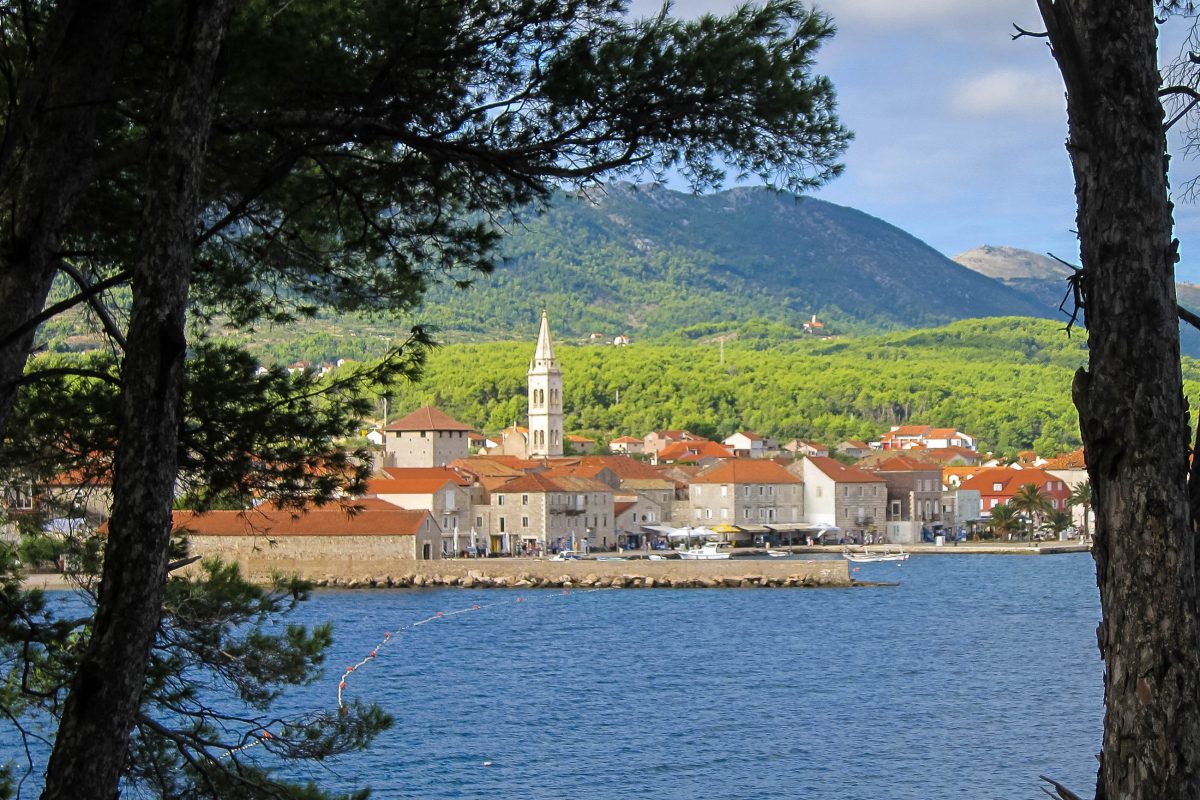
Der aufstrebende Touristenort Jelsa mitten auf der kroatischen Insel ist mit Campingplätzen und günstigen Hotels der ideale Ausgangspunkt für Wanderungen und Boots- und Badeausflüge. Durch seine günstige Lage kann man von Jelsa aus nahezu die gesamte Insel Hvar erkunden. Trotz des seit den 1960er-Jahren stark aufstrebenden Tourismus sind die Hotels immer noch günstiger als anderswo auf Hvar.
Einigen altrömischen Villen zufolge, die als Ferienhäuser genutzt wurden, war Jelsa bereits in der Antike bei Reisenden beliebt, das älteste Hotel in Jelsa stammt aus dem Jahr 1911. Das Publikum in Jelsa besteht vor allem aus jungen Leuten, dementsprechend hat sich in Jelsa auch ein reges Nachtleben entwickelt.
BILDER: Insel Hvar – Jelsa
Fotogalerie: Jelsa auf der Insel Hvar
Sehenswürdigkeiten von Jelsa
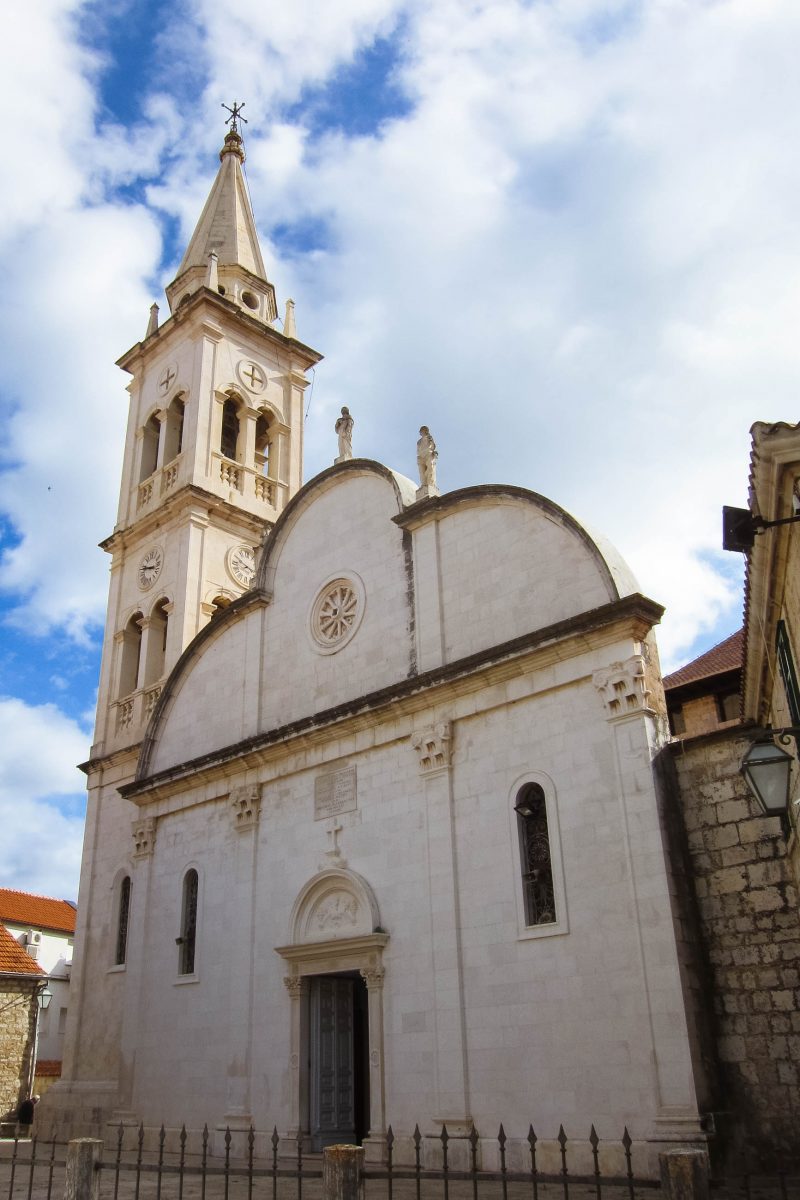
Die Altstadt von Jelsa ist einen Spaziergang wert und um einiges gemütlicher als der Hauptort Hvar. Zu den Highlights gehören die wehrhafte Pfarrkirche Sveti Fabijan i Sebastjan, die 1535 zum Schutz vor Piraten errichtet wurde und der wunderschöne Platz Sveti Ivan mit der zugehörigen Kapelle aus dem späten 15. Jahrhundert.
Der Garten Perivoj aus dem späten 19. Jahrhundert, ist mit Pappeln, Pinien, Akazien, Lorbeer- und Oleanderbüschen eine der schönsten Grünanlagen in ganz Dalmatien.
Sehenswert sind auch die Ruinen eines ehemaligen Augustinerklosters aus dem frühen 17. Jahrhundert, als Jelsa noch Civitas Vetus Ielsae hieß.
Als klassisches Souvenir solltet ihr in Jelsa eine Flasche Lavendel- oder Olivenöl erstehen.
Aktivitäten in Jelsa
Historische Stätten rund um Jelsa eignen sich hervorragend als Wanderziele, in den Grabčeva-Tropfstein-Höhlen können 7.000 Jahre alte Funde besichtigt werden und die vorgelagerten Inselchen laden zum Schwimmen und Baden ein.
Inselwanderungen

In Jelsa starten viele Inselwanderungen zu den umliegenden historischen Sehenswürdigkeiten, wie zum Beispiel die Humac-Hirtensiedlung, die Grabčeva-Tropfsteinhöhlen, die bereits in der Jungsteinzeit besiedelt waren und im Zuge einer Führung besichtigt werden können, oder die griechische Festungsanlage Tor.
Historische Dörfer mit schmalen Gassen und niedlichen Plätzen liegen wie zufällig verstreut an den von Rosmarin und Lavendel duftenden Hängen und Tälern um Jelsa. Auch die beiden höchsten Gipfel Hvars, der Nikola und der Hum, die Jelsa umschließen, können erklommen werden.
Auf einem malerischen Spazierweg an der Küste entlang ist der benachbarte Ort Vrboska zu erreichen, der vor allem für seine seltsam anmutende Wehrkirche oberhalb des Ortskerns bekannt ist. Sie wurde 1580 zum Schutz gegen Piraten errichtet und wäre nicht der Glockenturm, möchte man meinen, man stünde vor einer Festung.
Strände von Jelsa

In Jelsa direkt ist Baden an der betonierten Küsten wenig attraktiv. Die beliebtesten Strände von Jelsa liegen etwas weiter weg und sind beispielweise:
- Mina, etwa 500m vom Zentrum entfernt und ideal für Kinder
- der sandige Strand Grebišće inklusive Restaurant, ca. 1,5km entfernt
- die Bucht von St. Luke, ein 4km entfernten Kiesstrand, an dem es die kleine St. Luke-Kirche und archäologische Funde zu besichtigen gibt
Zum Baden sind vor allem auch die vorgelagerten Inselchen geeignet, die mit dem Taxiboot erreicht werden können. FKK-Freunde sollten die Insel Zečovo ansteuern. Wer die Inseln um Jelsa auf eigene Faust erkunden möchte, kann auch ein Boot mieten.
Zavala – Weinzentrum von Hvar
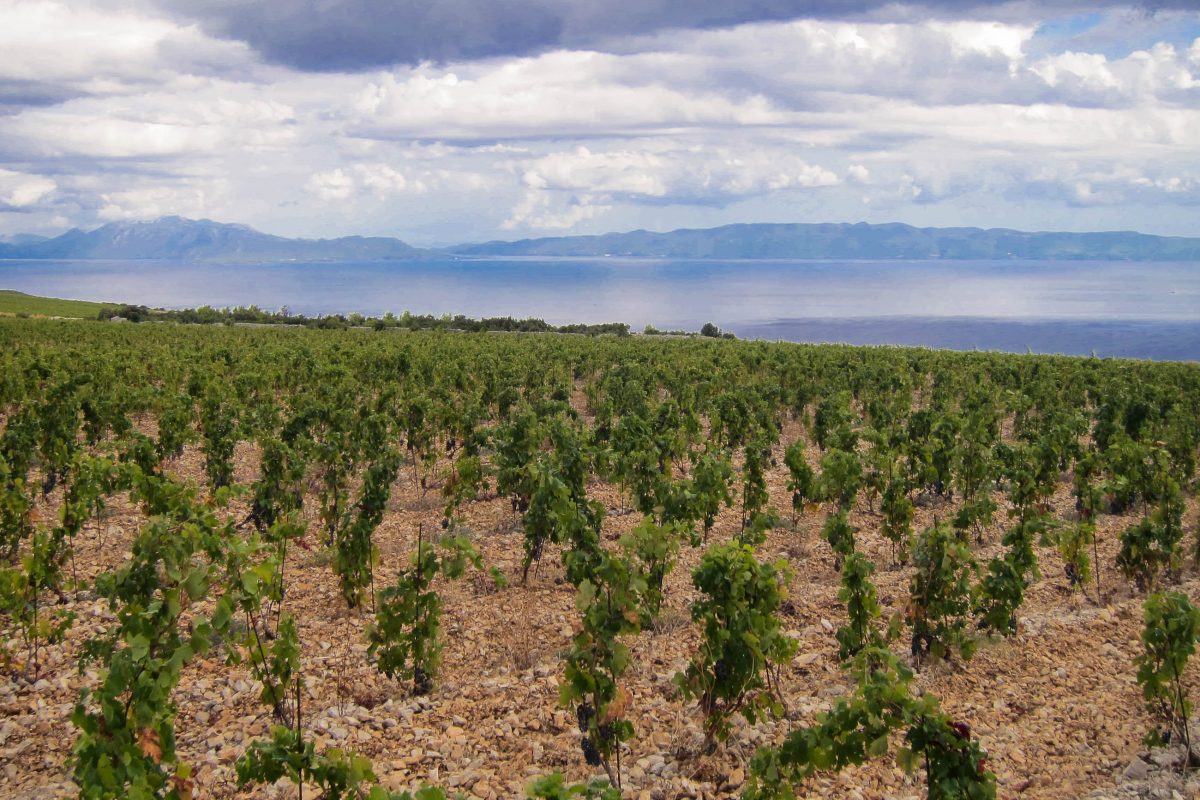
Nur 5km von Jelsa entfernt liegt Zavala. Dieser zauberhafte Ort liegt zwischen Kiefern- und Olivenhainen direkt am Meer und wird vor allem von Weinkennern geschätzt. Hier werden ausgezeichnete Weine gekeltert. Zu den berühmtesten gehören der Zlatan Plavac, der beinahe schon schwarze Faros, der ebenfalls sehr dunkle Ivan Dolac und der fast Sherry-ähnliche Bogdanuša.
Tipp: Die Straße nach Zavala führt durch einen Tunnel, der nur 2m hoch ist!
Geschichte von Hvar
Die langgestreckte Insel ist knapp 70km lang und bis zu 10km breit und war bereits in der Vorgeschichte besiedelt. Im 4. Jahrhundert siedelten die Illyrer auf Hvar, von denen einige historische Gräber übrig geblieben sind. Von den Römern wurde Hvar nicht erobert, die Illyrer behielten die Oberhand, mussten sich allerdings nach dem Untergang des Römischen Reiches den Byzantinern beugen.
Ab dem 11. Jahrhundert war Hvar unter ungarischer, bosnischer, ragusischer (das heutige Dubrovnik), venezianischer, österreichischer und schließlich jugoslawischer Herrschaft. Seit 1991 gehört Hvar zur unabhängigen Republik Kroatien.
Weiterführende Links:
Offizielle Website der Stadt Hvar
Offizielle Website von Jelsa




